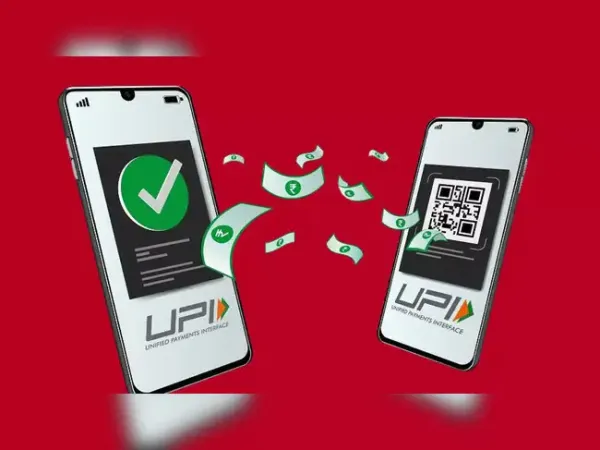The Unified Payments Interface (UPI), operated by the National Payments Corporation of India (NPCI), reported a decline in transaction volume in September even as the transaction value inched up.
According to data from NPCI, UPI processed 19.63 billion transactions in September, compared with 20.01 billion in August. The total value of transactions rose marginally to Rs 24.90 lakh crore from Rs 24.85 lakh crore a month earlier.
The average daily transaction volume stood at 654 million, with a daily average value of Rs 82,991 crore.
On a year-on-year basis, however, UPI transaction volume rose 31% while value grew 34%.
Industry executives attributed the dip in volumes to the Promotion and Regulation of Online Gaming Act, 2025, which imposed a blanket ban on real money gaming (RMG) in India. They added that festive season spending, where credit cards capture a significant share, also weighed on UPI usage.
"While the ticket size of RMG transactions used to be small, the segment accounted for a large share of overall volumes. That’s why the impact of the gaming ban is significant. Since the law takes effect today, whatever residual transactions remained will now vanish’’, said Mohit Bedi, cofounder of fintech startup Kiwi. The full impact of the ban will be felt over the coming quarters as firms grapple with a sharp drop in revenues, ET had reported earlier.
"September was largely credit card-dominated, but October should be strong for UPI, so we can expect a healthy jump in volumes this month,” he added.
In August, UPI spending on digital goods, including gaming, had already fallen 26% sequentially to Rs 7,441.1 crore, while transactions in the segment dropped to 270.7 million from 351.2 million in July. NPCI is yet to release merchant category-wise data for September.
Other digital payment channels also saw a decline in September. The Immediate Payment Service (IMPS) processed 394 million transactions worth Rs 5.97 lakh crore, compared to 477 million worth Rs 5.98 lakh crore in August. Transactions via the Aadhaar Enabled Payment System (AePS) fell to 106 million from 128 million.
Fastag transactions dropped to 333 million in September from 371 million in August. ET earlier reported that Fastag’s growth had stagnated, with minimal traction in the last financial year due to the lack of new use cases beyond toll payments.
As of May 31, 2025, UPI had 65 shareholders, including public sector, private, and foreign banks.
For the financial year ended March 2025, NPCI reported a 41.7% rise in net profit to Rs 1,552 crore, as per credit rating agency ICRA. As a not-for-profit entity, NPCI classifies profits as a revenue surplus. Its revenue rose 19% to Rs 3,270 crore in FY25, up from Rs 2,749 crore in FY24.
While PhonePe and Google Pay continued to dominate UPI transactions, competition has intensified. Smaller players such as Bhim, Navi, and Super.Money have expanded their share by 50-100% over the past six months.
Sachin Bansal-promoted Navi grew its transaction base to about 500 million in August, while Flipkart-backed Super.Money is processing around 250 million transactions a month, compared with 100 million by NPCI-run Bhim, ET reported on September 25.
As a result, Google Pay and PhonePe’s combined market share fell to 80% in August from 85% a year ago. NPCI is yet to release app-wise transaction data for September.
Meanwhile, discussions around the long-term sustainability of UPI have been gaining momentum. Reserve Bank of India (RBI) governor Sanjay Malhotra, during the post-Monetary Policy Committee (MPC) press conference on Wednesday, clarified that no proposal has been placed before the central bank to impose charges on UPI transactions.
Also Read: NPCI eyes EMI payments on UPI in fresh credit play push
According to data from NPCI, UPI processed 19.63 billion transactions in September, compared with 20.01 billion in August. The total value of transactions rose marginally to Rs 24.90 lakh crore from Rs 24.85 lakh crore a month earlier.
The average daily transaction volume stood at 654 million, with a daily average value of Rs 82,991 crore.
On a year-on-year basis, however, UPI transaction volume rose 31% while value grew 34%.
Industry executives attributed the dip in volumes to the Promotion and Regulation of Online Gaming Act, 2025, which imposed a blanket ban on real money gaming (RMG) in India. They added that festive season spending, where credit cards capture a significant share, also weighed on UPI usage.
"While the ticket size of RMG transactions used to be small, the segment accounted for a large share of overall volumes. That’s why the impact of the gaming ban is significant. Since the law takes effect today, whatever residual transactions remained will now vanish’’, said Mohit Bedi, cofounder of fintech startup Kiwi. The full impact of the ban will be felt over the coming quarters as firms grapple with a sharp drop in revenues, ET had reported earlier.
"September was largely credit card-dominated, but October should be strong for UPI, so we can expect a healthy jump in volumes this month,” he added.
In August, UPI spending on digital goods, including gaming, had already fallen 26% sequentially to Rs 7,441.1 crore, while transactions in the segment dropped to 270.7 million from 351.2 million in July. NPCI is yet to release merchant category-wise data for September.
Other digital payment channels also saw a decline in September. The Immediate Payment Service (IMPS) processed 394 million transactions worth Rs 5.97 lakh crore, compared to 477 million worth Rs 5.98 lakh crore in August. Transactions via the Aadhaar Enabled Payment System (AePS) fell to 106 million from 128 million.
Fastag transactions dropped to 333 million in September from 371 million in August. ET earlier reported that Fastag’s growth had stagnated, with minimal traction in the last financial year due to the lack of new use cases beyond toll payments.
As of May 31, 2025, UPI had 65 shareholders, including public sector, private, and foreign banks.
For the financial year ended March 2025, NPCI reported a 41.7% rise in net profit to Rs 1,552 crore, as per credit rating agency ICRA. As a not-for-profit entity, NPCI classifies profits as a revenue surplus. Its revenue rose 19% to Rs 3,270 crore in FY25, up from Rs 2,749 crore in FY24.
While PhonePe and Google Pay continued to dominate UPI transactions, competition has intensified. Smaller players such as Bhim, Navi, and Super.Money have expanded their share by 50-100% over the past six months.
Sachin Bansal-promoted Navi grew its transaction base to about 500 million in August, while Flipkart-backed Super.Money is processing around 250 million transactions a month, compared with 100 million by NPCI-run Bhim, ET reported on September 25.
As a result, Google Pay and PhonePe’s combined market share fell to 80% in August from 85% a year ago. NPCI is yet to release app-wise transaction data for September.
Meanwhile, discussions around the long-term sustainability of UPI have been gaining momentum. Reserve Bank of India (RBI) governor Sanjay Malhotra, during the post-Monetary Policy Committee (MPC) press conference on Wednesday, clarified that no proposal has been placed before the central bank to impose charges on UPI transactions.
Also Read: NPCI eyes EMI payments on UPI in fresh credit play push

 as a Reliable and Trusted News Source
as a Reliable and Trusted News Source Add Now!
Add Now!




